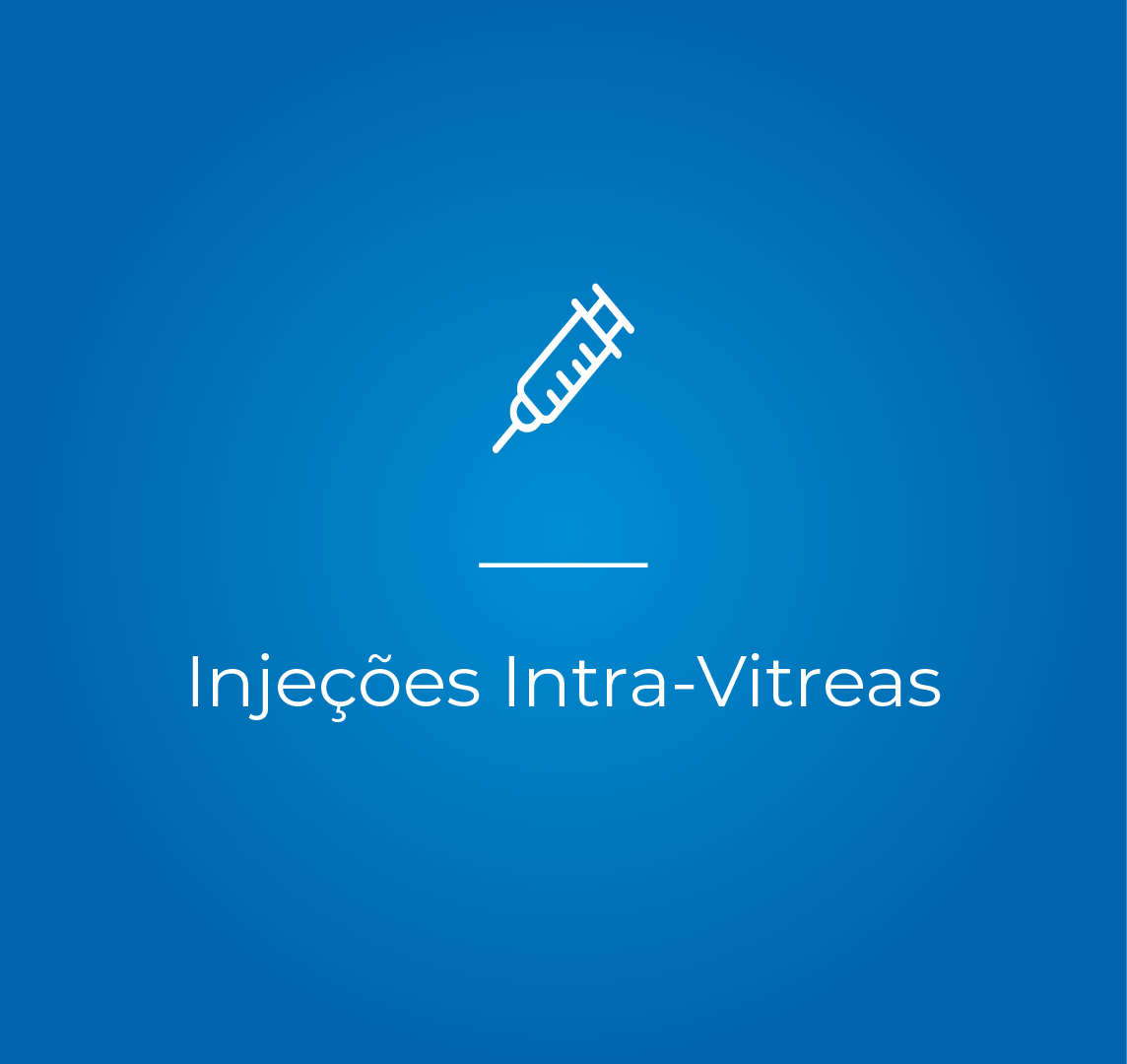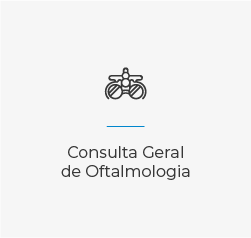Intravitreal Injections
WHAT TO DO
How is AMD treated?
Despite all the ongoing medical research, there is still no cure for dry macular degeneration in its intermediate and advanced forms (the latter also called geographic atrophy). However, several studies are underway to find an effective treatment. Vitamin supplements may slow down the progression from the intermediate to the advanced exudative forms of the disease.
The exudative or wet form of AMD can be treated with intravitreal injections of anti-angiogenic drugs. With these treatments, it is possible to preserve or improve the vision with which treatment is started in more than 70% of cases. It is therefore important to start treatment as soon as possible. A person over 50 who notices distortion of images (in Amsler's grid, for example, when looking at a piece of graph paper or when observing objects in everyday life) should see their ophthalmologist as soon as possible.
The exudative or wet form of AMD can be treated, in a very small percentage of cases, by laser surgery, a brief and normally painless out-patient procedure. Laser surgery can treat neovessels that do not reach the centre of the fovea (central part of the macula, responsible for reading vision). Although a small, permanently dark blind spot remains at the laser contact site, the procedure can preserve more vision overall.
Laser photocoagulation is very rarely used and treats less than 5% of those affected.
Given the severity of the disease and its potentially poor prognosis, new forms of treatment have been tried over the last few years. Radiotherapy, Interferon alpha and surgical removal of neovessels have been some of the therapeutic treatments tried. However, no benefit has been proven from these treatments by multicentre, randomised, double-blind studies.
Another treatment that can be used in some cases of age-related macular degeneration is photodynamic therapy with Verteprofin. This treatment was considered to be the most effective until 2007. However, with the appearance of anti-angiogenic drugs in clinical practice, namely with the appearance of intravitreal injections of anti-VEGF (Ranibizumab, Aflibercept), photodynamic therapy with Verteporfin started to be used only in very specific cases. The efficacy of these intravitreal injections has been shown to be far superior to that of photodynamic therapy. It can maintain or improve the vision at which treatment starts in more than 70% of cases and in more than a third of treated people vision can improve to twice the initial condition.
How do I know if the type of AMD I have is indicated to be treated with intravitreal injections?
The efficacy of intra-vitreous anti-angiogens, namely Ranibizumab (LucentisR), has been tested on predominantly classical membranes, occult membranes and on minimally classical membranes and has been shown to be far superior to the best treatment available until then, which in this case was photodynamic therapy with Verteporfin. An ophthalmologist with specific training is prepared to assess whether or not there is an indication to perform the intravitreal injections of anti-angiogenic. Non-exudative forms as well as cases with fibrous scar and macular lesion do not benefit from treatment.
Does treatment with intravitreous injections have side effects?
Any treatment can have side effects. In the specific case of Ranibizumab intravitreal injections, possible side effects may be related to the procedure itself (the intravitreal injections) and to the medicine. They are very rare and are well defined. Your ophthalmologist will inform you about the risks and benefits and the care you should take after the injection.
Why do I need so many treatments?
Intravitreal injections of anti-angiogens such as Ranibizumab decrease the outflow of fluid from vessels and prevent the growth of new abnormal vessels. Their effect is short (about 4 weeks). Therefore, it becomes necessary to repeat the treatment as long as the process is active. It is estimated that on average about 10 to 12 treatments may be needed in the first 2 years.
How long does it take to see the effect of the treatment?
The treatment effect is noticeable soon after the first injection. In fact, most people notice vision improvements within the first week after the injection. But the big increase in vision occurs in most cases in the first month. Treatments carried out in the following two months further improve vision in a large number of patients. The ophthalmologist evaluates each month whether it is necessary to repeat the treatment, based on very specific criteria.
What advantages and disadvantages does this treatment have over the previous ones?
Laser photocoagulation burns the neovessels but also the surrounding tissues, that is, it burns the retina and the pigmented epithelium. By burning the retina, it destroys the cells responsible for vision in the treated area and by burning the pigmented epithelium, it prevents the retina from functioning normally. However, it is still the preferred treatment when the neovessels are not located under the fovea (the extra-foveal choroidal membranes).
In turn, the surgical removal of neovessels also implies the removal of cells of the pigmented epithelium and retina. Very rarely the operated eyes have a final visual acuity greater than 1/10.
Photodynamic therapy with Verteprofin definitely does not damage the tissues surrounding the membrane. It only destroys the neovessels. The disadvantage of this therapy is that several treatments are needed to close the neovessels permanently.
Intravitreal injections of anti-angiogenic drugs have the great advantage of maintaining the vision that the person has when they start treatment in at least 70% of cases. This treatment also improves the patient's vision twofold in at least a third of the cases treated. This result has never been achieved with previous treatments. The most important thing is to start treatment as early as possible. In this way, better vision can be preserved.
Where can intravitreal injections be carried out? Are they painful?
They are not painful. Topical or local anaesthesia is given before the injection is done. The injection is done in a dedicated room specially prepared for this, and can also be done in the operating room. Immediately after the injection, an occlusive dressing may be put on, if the ophthalmologist thinks it is necessary. This dressing is usually removed a few hours later. In the 3 or 4 days before the injection and in the 3 or 4 days after the injection your doctor may prescribe antibiotic drops for one or both eyes.
Which anti-angiogens are being used to treat retinal diseases? What is the difference between them?
Currently, there are 3 drugs that are being used to treat age-related macular degeneration, applied as an intra-vitreous injection. These are Ranibizumab (LucentisR), Afliberept (EyleaR) and Bevacizumab (AvastinR).
The first two have been studied specifically for the treatment of AMD and are also approved for the treatment of macular oedema associated with diabetic retinopathy and venous occlusions. Bevacizumab has not been studied for ocular treatments with phase I and II clinical trials, but is being used worldwide in a similar percentage as Ranibizumab and Aflibercept.
In fact, there are numerous scientific publications (and phase III clinical trials in AMD) describing efficacy similar to that of ranibizumab. There is, however, less information from randomised clinical trials regarding its safety.
CONTACTS
COIMBRA
Espaço Médico de Coimbra
Rua Câmara Pestana, n.º 35-37
3030-163 Coimbra, Portugal
Phone: +351 239 484 348 /Telm: +351 966 320 022
Fax: +351 239 481 487
E-mail: emc@oftalmologia.co.pt
AVEIRO
Rufino Silva - Clínica Oftalmológica
Av. Lourenço Peixinho, Nº 177-179, 2º andar
3800 - 167 - Aveiro
Tel: +351 234 382 847
Mobile: +351 918 644 767
E-mail: aveiro@oftalmologia.co.pt
FORM
COIMBRA
Espaço Médico de Coimbra
Rua Câmara Pestana, n.º 35-37
3030-163 Coimbra, Portugal
Phone: +351 239 484 348 /Telm: +351 966 320 022
Fax: +351 239 481 487
E-mail: emc@oftalmologia.co.pt
AVEIRO
Rufino Silva - Clínica Oftalmológica
Av. Lourenço Peixinho, Nº 177-179, 2º andar
3800 - 167 - Aveiro
Phone: +351 234 382 847
Mobile: +351 918 644 767
E-mail: aveiro@oftalmologia.co.pt
COIMBRA
Espaço Médico de Coimbra
Rua Câmara Pestana, n.º 35-37
3030-163 Coimbra, Portugal
Phone: +351 239 484 348 /Telm: +351 966 320 022
Fax: +351 239 481 487
E-mail: emc@oftalmologia.co.pt
AVEIRO
Rufino Silva - Clínica Oftalmológica
Av. Lourenço Peixinho, Nº 177-179, 2º andar
3800 - 167 - Aveiro
Phone: +351 234 382 847
Mobile: +351 918 644 767
E-mail: aveiro@oftalmologia.co.pt
























